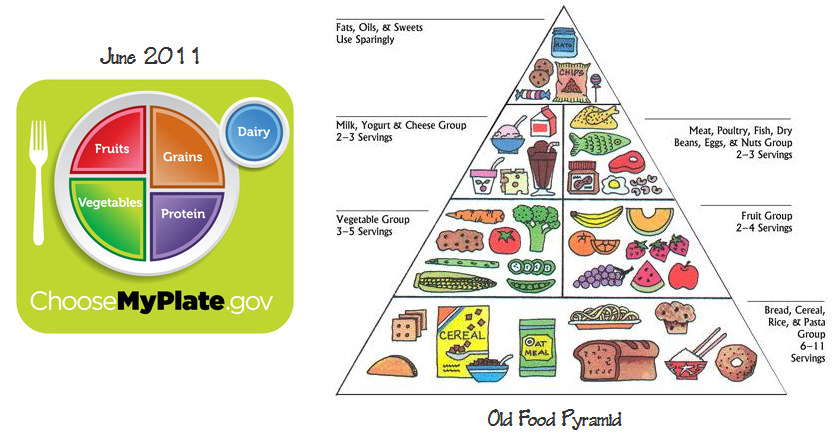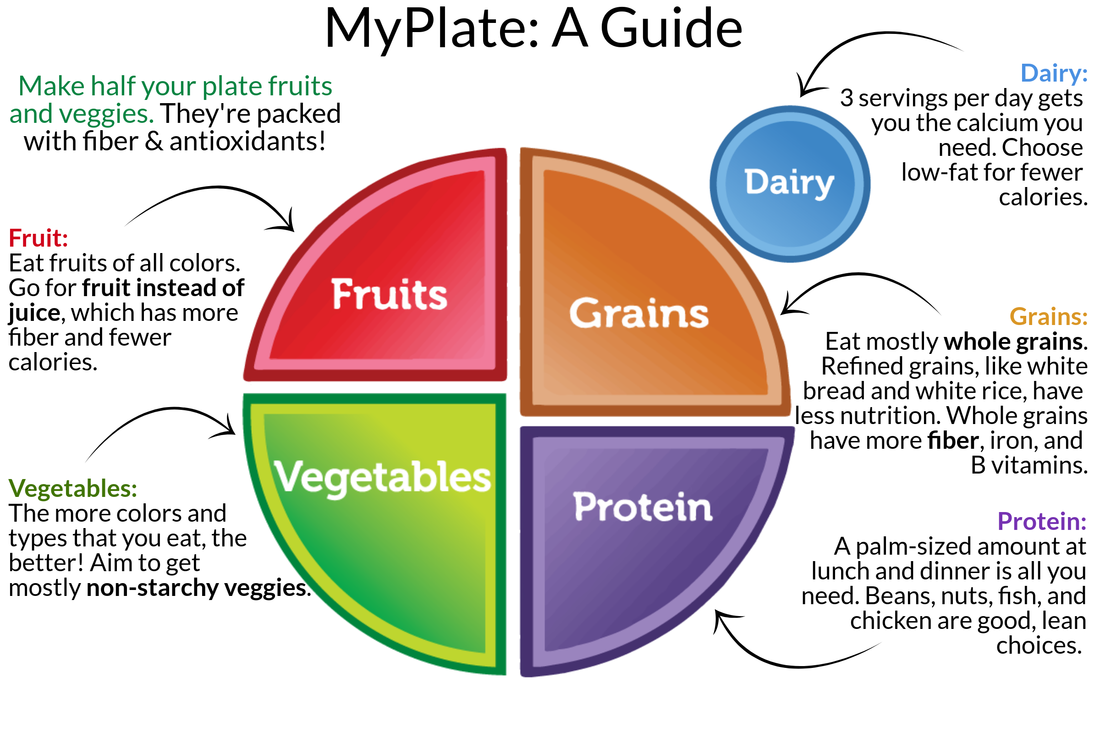MyPlate
What is MyPlate?

For many years one of the most recognised nutritional guides in society was the Dietary Guideline ‘Food Pyramid.” The USDA food pyramid was created in 1992 and is divided into six horizontal sections containing the number of servings and type of foods the average American should be consuming per day. The pyramid included sections for grains, vegetables, fruits, meats, protein sources, dairy and fats. To show that grains should be the focus of a diet the pyramid had a larger section at the bottom with the recommended quantities getting smaller towards the top of the pyramid. For example, fats, oils, and sweets were at the top, guiding people to only consume small amounts of this food group. Whilst the pyramid seemed effective for many years, recent studies have shown that there are many flaws in this diagram. After discovering many faults with the Food Pyramid action was taken and it was decided that there needed to be an educational change. Thus, resulting in what we now know as the MyPlate tool. The Food Pyramid has become vastly outdated in comparison to MyPlate.
MyPlate focuses on higher quantities of healthier whole grains, proteins, fruits, and vegetables. Protein was something the food pyramid neglected, it did include a small section for meats, eggs, and poultry, but it was described as just that. There was no mention of ‘good quality, healthy’ protein sources. Meaning that if people are unaware of just how important protein is for human function, then proteins could get pushed aside as not a priority in most American diets. From research we know that good-quality protein and high-quality fruits/vegetables are highly valuable sources of nutrition that we need to be consuming with every meal. The MyPlate tool also does not include fats and sugars as overindulgence in these food groups can lead to obesity.
With the dietary requirements of the MyPlate tool being similar to the food pyramid, the tool puts greater focus on the colourful portion sizes that we need to consume, with the sectioned portion sizes providing a visual aid for each meal. The MyPlate guide is very easy to understand and therefore adults, small children and teenagers are now able to use it. Ultimately, the MyPlate tool gives us a fresh, new, and easy to follow visual aid of which food groups and how much of them to consume.
For more information please visit the MyPlate website.

*DISCLAIMER: Please consult your GP before making any changes to your diet, this page is just information to help assist and give you some basic nutrition knowledge.
References:
1. USDA's Center for Nutrition
2. MyPlate website [https://www.myplate.gov]
3. Offical Course Text: ISSA Nutrition (Daniel Gastelu, MS, MFS,
ISSA Professor & Director of Nutritional Sciences (Emeritus), and ISSA Elite Trainer.
NJ)



